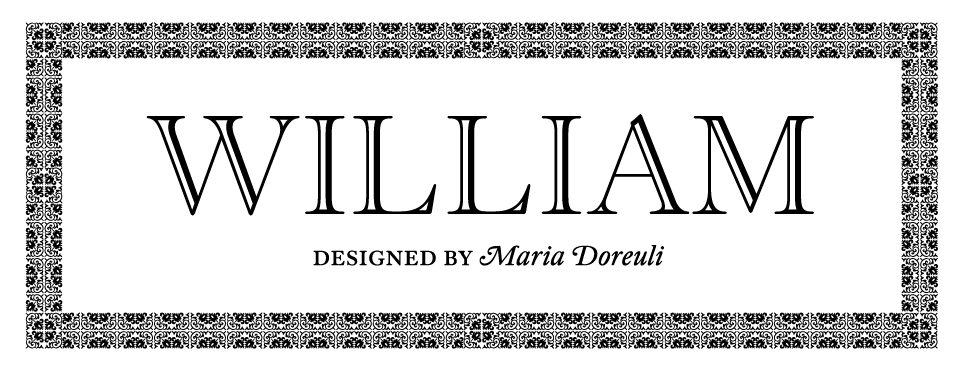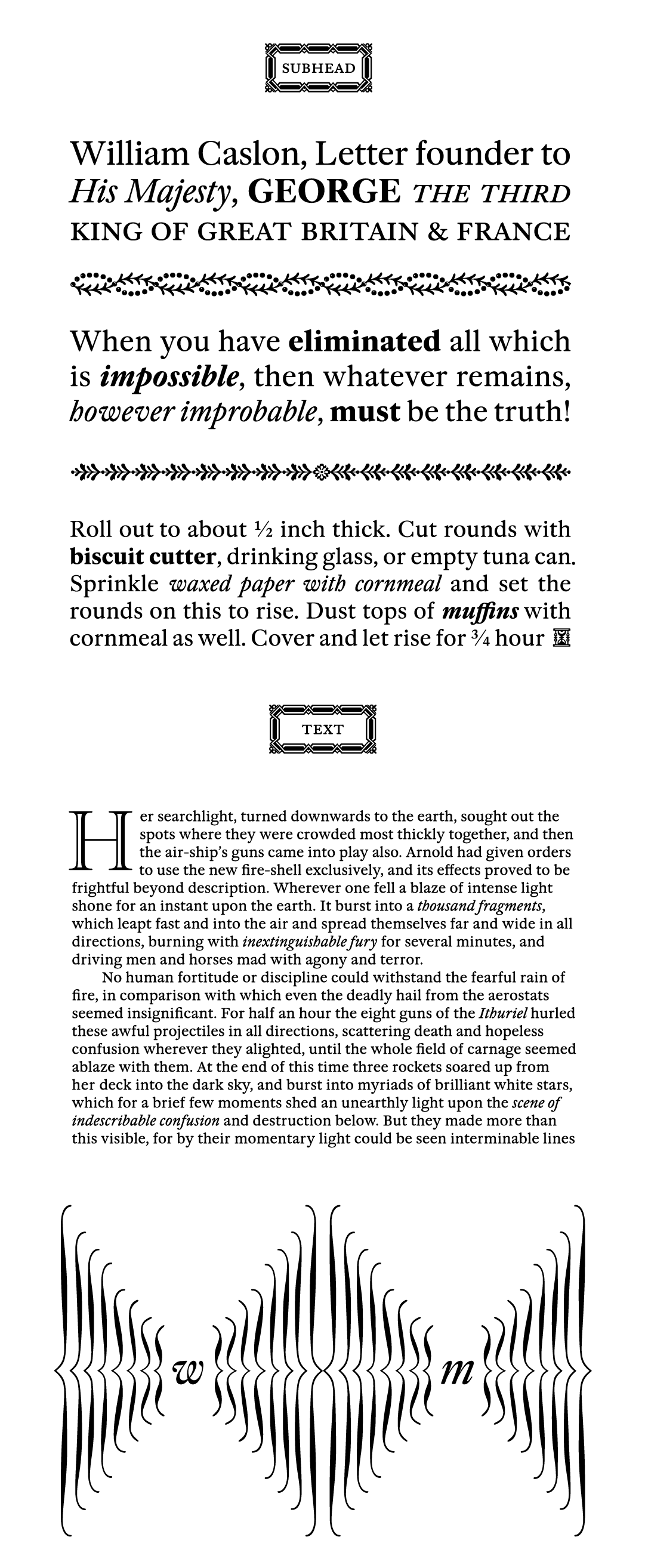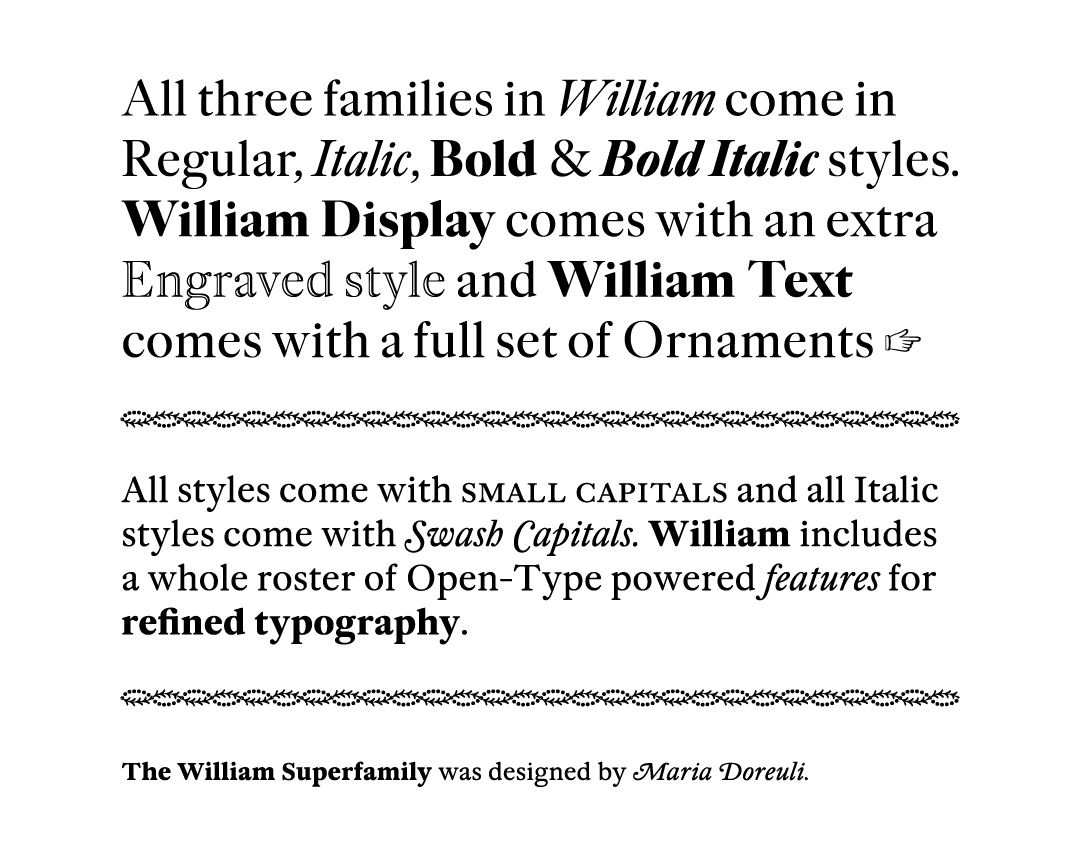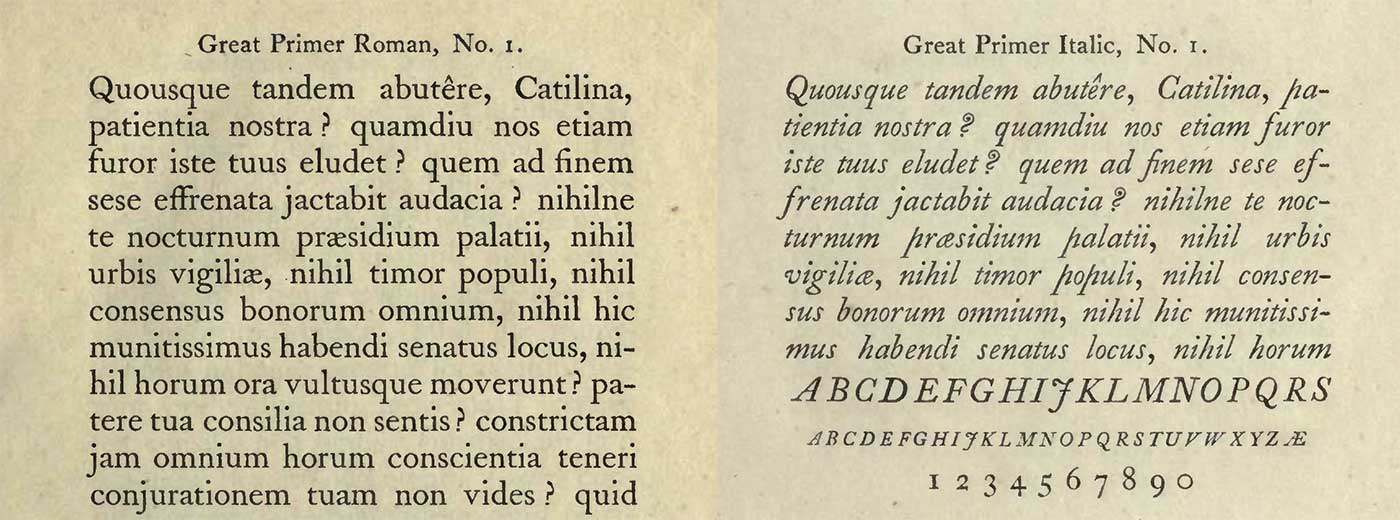William, a Contemporary Interpretation of Caslon Types





William Caslon (1692–1766) established the cornerstone of British type founding, ending reliance on the Dutch types which were commonly used in England up to that point (and which inspired his designs). Caslon achieved success both at home and abroad, and the American Declaration of Independence was printed in 1776 using Caslon type. Caslon typefaces set the aesthetic standard for book design, and by the 20th century, the name Caslon referred not only to a specific set of typefaces, but an entire brand.

A Specimen of Printing Types, a digital scan of the 1796 book used as the starting point of William
Maria Doreuli started drawing William in 2008 under the guidance of Alexander Tarbeev at the Moscow Institute of Printing, basing her work on digitised versions of the Caslon Foundry’s catalogues from 1785 and 1796. Various pre-release versions of William have been used in books and magazines since 2009, and these early samples helped to shape and improve the typeface. In 2011, William was one of the winners of AtypI’s Letter 2 competition, a collection of the best typefaces of the decade.
In 2013, Typotheque committed to publishing William, and restructured the typeface family jointly with Maria, creating new styles and dropping some others to create a truly useful multilingual family of fonts. Three years later we are pleased to officially announce the release of a polished and expanded family in two weights, three optical sizes, an engraved version, and a set of ornaments. William is delicately modelled on the original sources but adapted to digital technologies, making it useful both in print and on screen.
Caslon’s work has a permanent place in the history of typography. William builds on his foundation and makes his type relevant for a new generation of designers. It is available in three optical sizes, a Text version with a large x-height for smaller text from 7 to 12pt, a Subhead version for use at 14 to 30 points, and Display version for text larger than 36 points. Just as Caslon cut many non-Latin types and ornaments, William focuses on his international typography, and Cyrillic and Greek versions will follow the current release.
Type specimen illustrations by Shiva Nallaperumal.